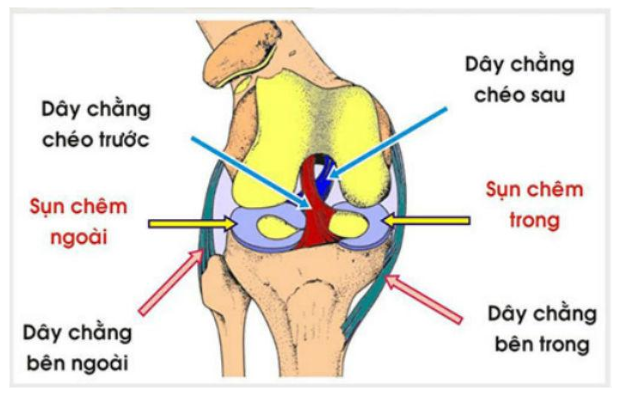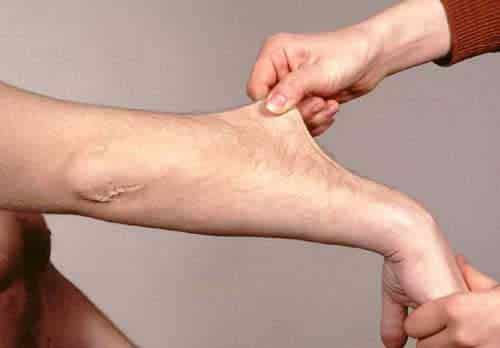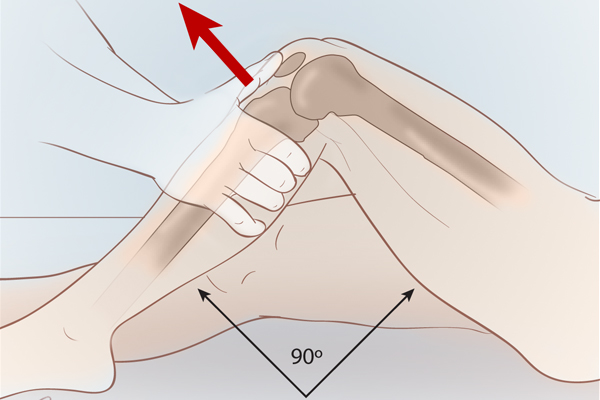Looseness of ligaments in knees, shoulders, ankles, neck
Ligaments in the positions of knees, shoulders, ankles, neck play a role in the flexible movement of the body. Loose ligaments can make you more susceptible to injury during activity and interfere with daily activities.
1. What is loose ligament?
In the human body, ligaments will connect with each other and play a role in stabilizing the skeleton. Ligaments help joints move, move flexibly as without ligaments in joints such as knees, you would not be able to walk or sit.
Most people have naturally stretched ligaments. Ligament laxity occurs when the ligaments become too loose, also known as laxity. Ligament laxity can affect joints throughout the body such as the neck, shoulders, ankles, or knees.

Dây chằng đóng vai trò ổn định khung xương
2. Symptoms and causes of ligament laxity
2.1. Symptom
Signs of ligament laxity tend to occur in or around the affected joints. Those symptoms include:
Pain, numbness or tingling Muscle spasms Frequent trauma or dislocation Cracked joints
2.2. Reason
In some cases, there is no obvious cause for ligament laxity. According to experts, certain genetic conditions affecting the body's connective tissue have the potential to cause ligament laxity, such as:
Hyperactivity syndrome Ehlers-Danlos syndrome Marfan syndrome Bone disease vitreous Down syndrome Some conditions can cause this condition such as:
Cartilage dysplasia Osteoarthritis Injuries and accidents Trauma can also cause ligament laxity especially muscle strain and trauma repeat. However, people with loose ligaments are also at higher risk of injury, so it's not always clear whether the injury is due to loose ligaments or vice versa.

Hội chứng Ehlers-Danlos là một nguyên nhân gây lỏng lẻo dây chằng
3. Diagnosis and treatment
3.1. Diagnose
Beighton score is a common screening tool for joint hypermobility. This diagnostic method involves completing a series of movements such as pulling the fingers back or bending over and placing the patient's hand flat on the ground.
A specialist will use this test to evaluate if ligament laxity is present in many areas of your body. In rare cases, ligament laxity is a sign of a more serious condition such as Ehlers-Danlos or Marfan syndrome. Your doctor may decide to conduct additional tests if you have other symptoms of a connective tissue condition such as fatigue or muscle weakness.

Điểm Beighton là một phương pháp chẩn đoán giãn dây chằng
3.2. Treatment
Looseness of the ligament does not always require treatment, especially if it is not painful. However, in many cases, physical therapy is required to help strengthen the muscles around the joint, and the patient even needs surgery to repair the ligaments.
In a nutshell, ligament laxity is a medical term for loose ligaments, which can lead to looser bends than normal. This condition is painful and can increase the risk of injury such as dislocation.
Để đặt lịch khám tại viện, Quý khách vui lòng bấm số HOTLINE hoặc đặt lịch trực tiếp TẠI ĐÂY. Tải và đặt lịch khám tự động trên ứng dụng MyVinmec để quản lý, theo dõi lịch và đặt hẹn mọi lúc mọi nơi ngay trên ứng dụng.
Reference source: healthline.com
Bài viết này được viết cho người đọc tại Sài Gòn, Hà Nội, Hồ Chí Minh, Phú Quốc, Nha Trang, Hạ Long, Hải Phòng, Đà Nẵng.






